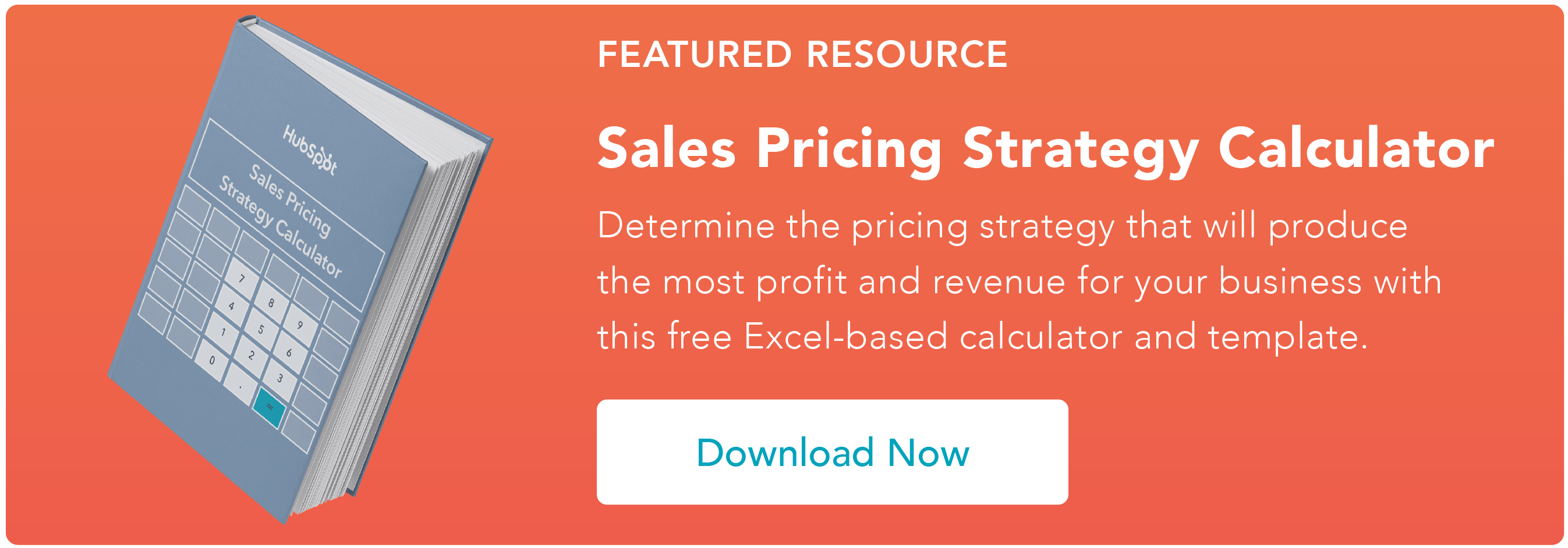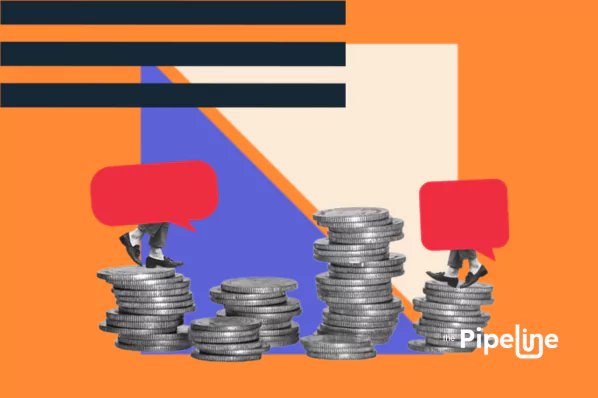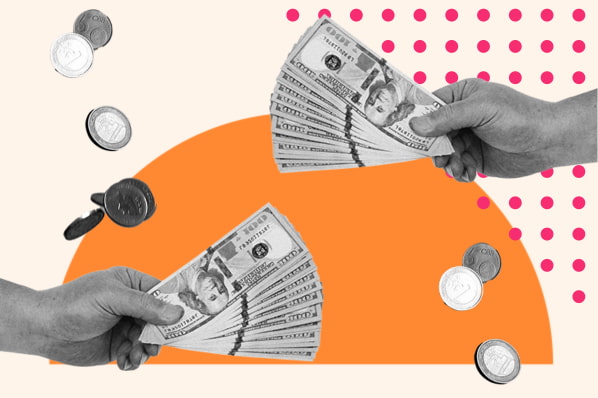Demand-based pricing comes in a variety of forms — all united by the fact that they play on consumer demand. These methods can vary based on several factors, including a company's business goals, its place in its market, consumer preferences, and the quality of its product.
The specific demand-based pricing method a company will leverage also relies on how and when a company enters its market. Generally speaking, original innovators won't apply the same methodology as those that make a budget-friendly alternative.
Take a deeper look into what dynamic pricing is and how it can apply to your business in this video:
Here are some demand-based pricing methods that might suit your company — depending on where your business stands.
Demand-Based Pricing Methods
Here, we're going to take a closer look at four prominent demand-based pricing methods: price skimming, penetration pricing, value-based pricing, and yield management.
1. Price Skimming
Price skimming is the practice of identifying and charging the highest price of a product consumers are willing to buy and charging less as time goes on. So a company might set the price for its product as disproportionately high initially, but as new competition emerges and the consumer surplus decreases, that company will gradually scale its price down to accommodate an increasingly price-sensitive customer base.
The strategy is most often employed by creators of novel technology. As the competitors in those companies' spaces catch up or present their own alternatives, the original innovators need to adjust their prices to adapt.
Featured Resource: Free Price Skimming Calculator
 Download this Template for Free
Download this Template for Free
2. Penetration Pricing
Penetration pricing is the process of attracting new buyers to a product or service by undercutting its value upon initial offering and setting prices low. The intention is to create the perception of that product's value relative to its competitors.
It's a process built on the idea that lower prices can increase brand awareness, and once your brand has captured consumer attention, it will retain the customers that took a chance on the product — even if prices rise.
Featured Resource: Free Penetration Pricing Calculator
 Download this Template for Free
Download this Template for Free
3. Value-Based Pricing
Value-based pricing is the process of pricing a product based on how much consumers think it's worth. The concept applies most to products designed to enhance a customer's self-image. Customers pay a price completely based on their collective perception of its value.
That's often a matter of the grandeur of the product. Value-based pricing is what drives what might feel like excessive prices for premium goods. Still, based on the breadth of its applications, it's a concept worth understanding.
Featured Resource: Free Value-Based Pricing Calculator
 Download this Template for Free
Download this Template for Free
4. Yield Management
Yield management is a strategy where a business that sells fixed-inventory resources within limited windows of time attempts to price its product to match how levels of demand for it fluctuate as that timeframe progresses. This strategy is particularly prevalent in the airline and hotel industries — as tickets and room reservations typically get pricier as their dates get closer.
It rests on the assumption that the scarcity and urgency that come with a finite, timebound supply of a product weigh on consumers more as availability wanes — making them more willing to pay higher prices.
Examples of Demand-Based Pricing
The Airline Industry
The airline industry offers one of the most prominent, everyday examples of demand-based pricing. Flight prices fluctuate based on factors like timing and seasonality.
For instance, airlines typically charge higher prices for tickets to Las Vegas on New Year's Eve than they do during most other times of the year. Why? Because they can, and people will still pay for them.
There's greater demand for flights on the holiday — so much so that airlines can charge roughly twice as much as they would for those same flights just a week later.
Disney World
The price of admission to Disney World can vary pretty radically by season. The park hikes up prices around Christmas, New Years, and Easter. Conversely, prices during January and early February tend to be the cheapest.
The reasoning behind these price fluctuations is pretty straightforward. Big holidays drive demand for tourist attractions like Disney World, whereas the latter portion of January and early parts of February immediately follow big travel seasons — when families have typically taken time off and already traveled.
iPhones
Apple generally employs price-skimming with each new iPhone generation it releases. It typically prices each new model at what seems like a disproportionately high cost.
As time goes on and the demand for the new phones at that initial price point wanes, the models get progressively less expensive. Eventually, it releases a new iPhone model, and the cycle restarts.
Demand-Based Pricing Advantages and Disadvantages
Advantage: It can help you optimize revenue generation.
Every brand of demand-based pricing is structured to get as much mileage as possible out of consumer demand. If you can put together a strategy that effectively capitalizes on the demand for your product or service — regardless of where it might stand — you can put your business in a solid position to maximize revenue.
Disadvantage: It can be labor-intensive.
Demand-based pricing is never completely intuitive. In most cases, you can't construct one of these strategies based on hunches and guesses — it takes intensive research and a fair amount of trial and error.
None of that comes easily. It's a labor-intensive, often stressful process — and if you're not prepared to commit to doing it right, you might be better off sticking to a more straightforward pricing method.
Advantage: Certain strategies can better serve customers by ensuring access to fixed inventory.
This point applies specifically to yield management. By adjusting prices as a time-bound product comes closer to the end of its frame of availability, you essentially maintain some access to that product's fixed inventory. While the remaining units of that product will be pricier, they'll still be there for last-second buyers — in many cases, that can boost customer satisfaction.
Disadvantage: It can be extremely finicky.
This one ties into the other disadvantage listed here. Demand can be volatile and tough to predict. Even with extensive market research behind your strategy, there's no guarantee that demand will play out as you expect it to. As I mentioned, trial and error are key, but even the data you accrue through that might not always be reliable.
Demand-Based Pricing Strategy
Demand-based pricing comes in a wide variety of forms that accommodate different business needs and market positions. It will take some thought and careful consideration to pin down a strategy that best suits your company. Still, no matter the nature of your business, it's with understanding the fundamental principles of demand-based pricing.
Pricing Strategy
.png?width=112&height=112&name=Image%20Hackathon%20%E2%80%93%20Vertical%20(45).png)








![Price Skimming: All You Need To Know [+ Pricing Calculator]](https://53.fs1.hubspotusercontent-na1.net/hubfs/53/price-skimming-strategy.jpg)

.jpg)
![B2B Pricing Models & Strategies [+ Pros and Cons of Each]](https://53.fs1.hubspotusercontent-na1.net/hubfs/53/b2b-pricing-models-and-strategies.jpg)